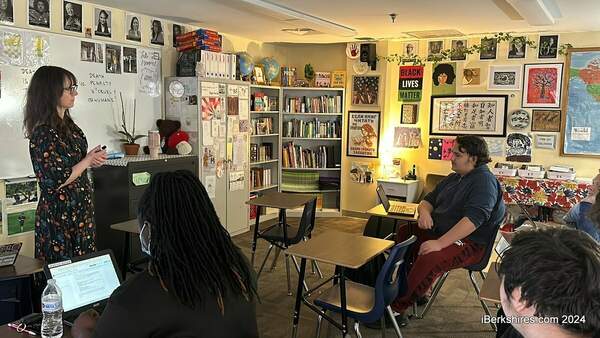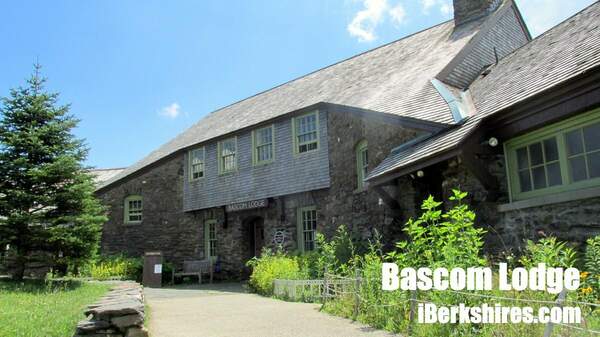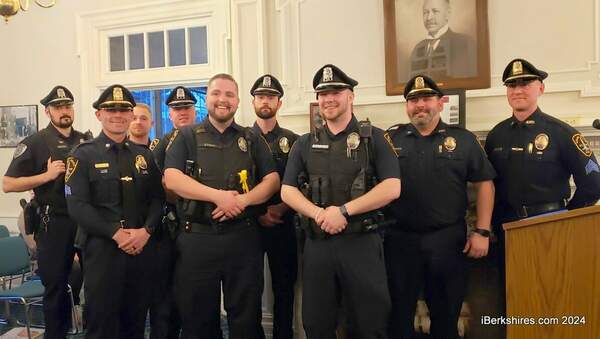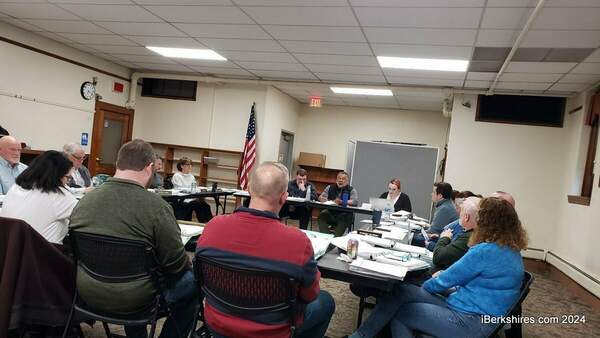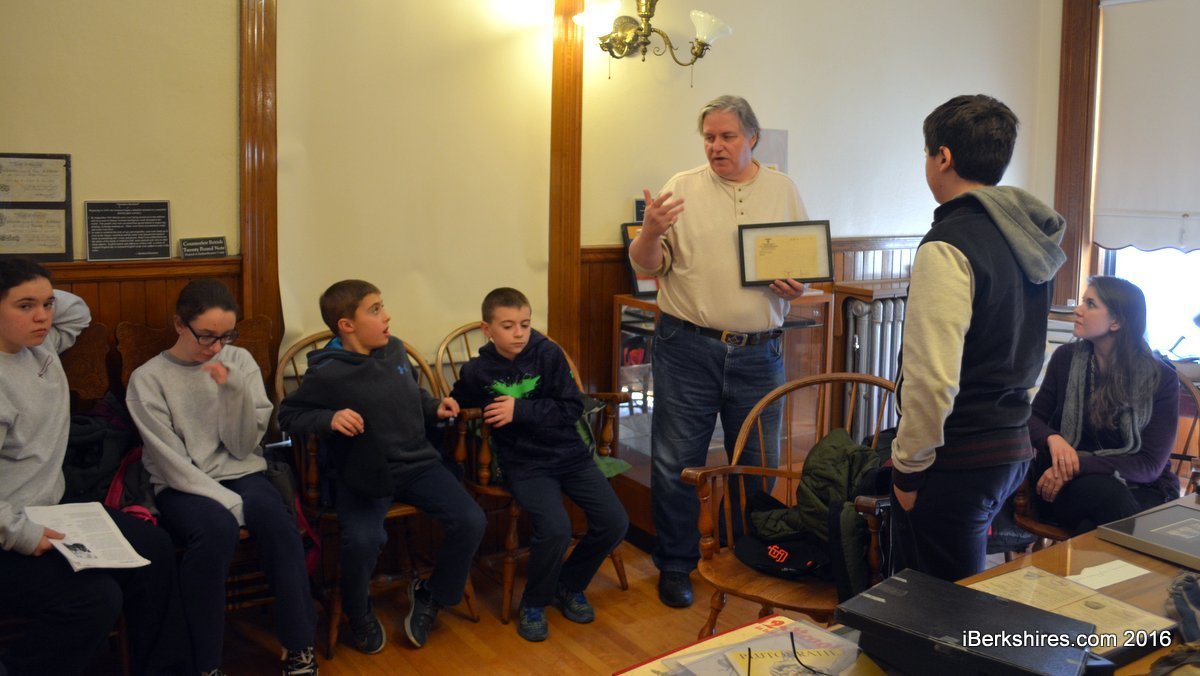
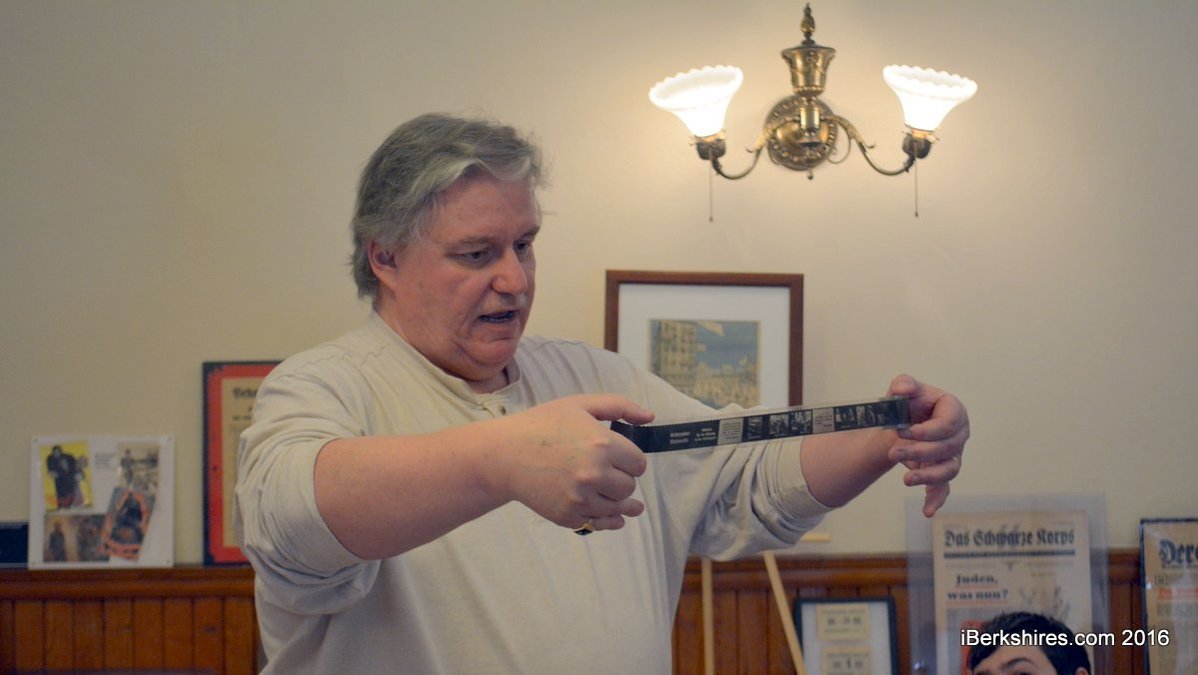
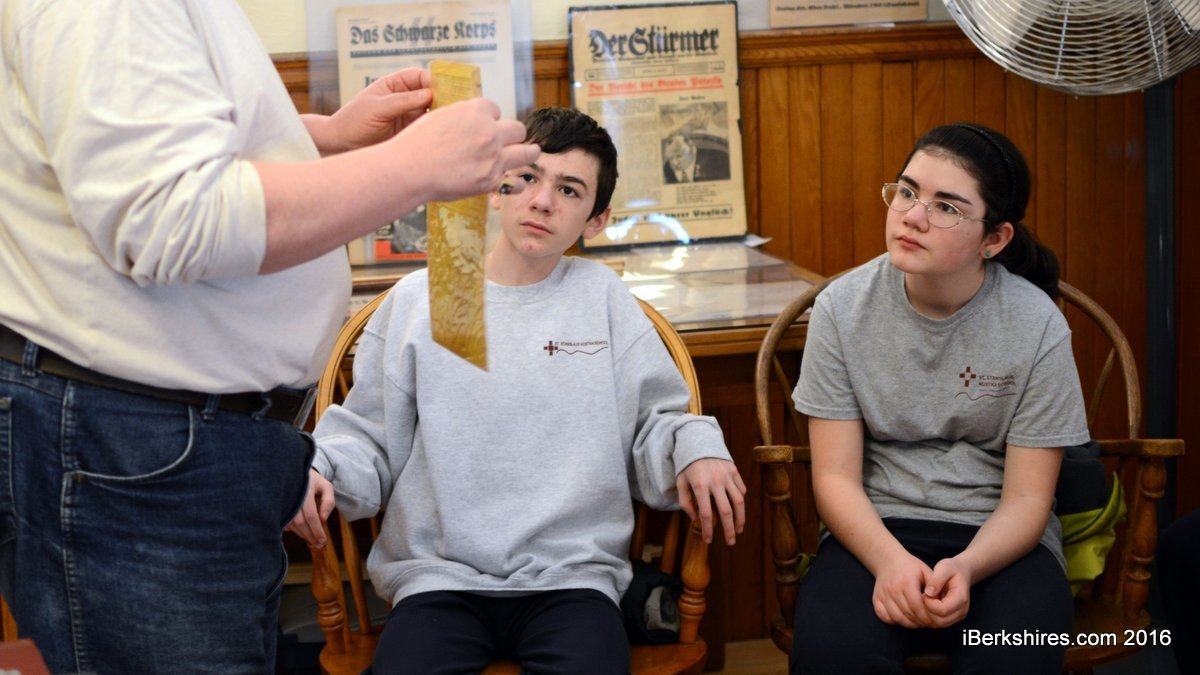
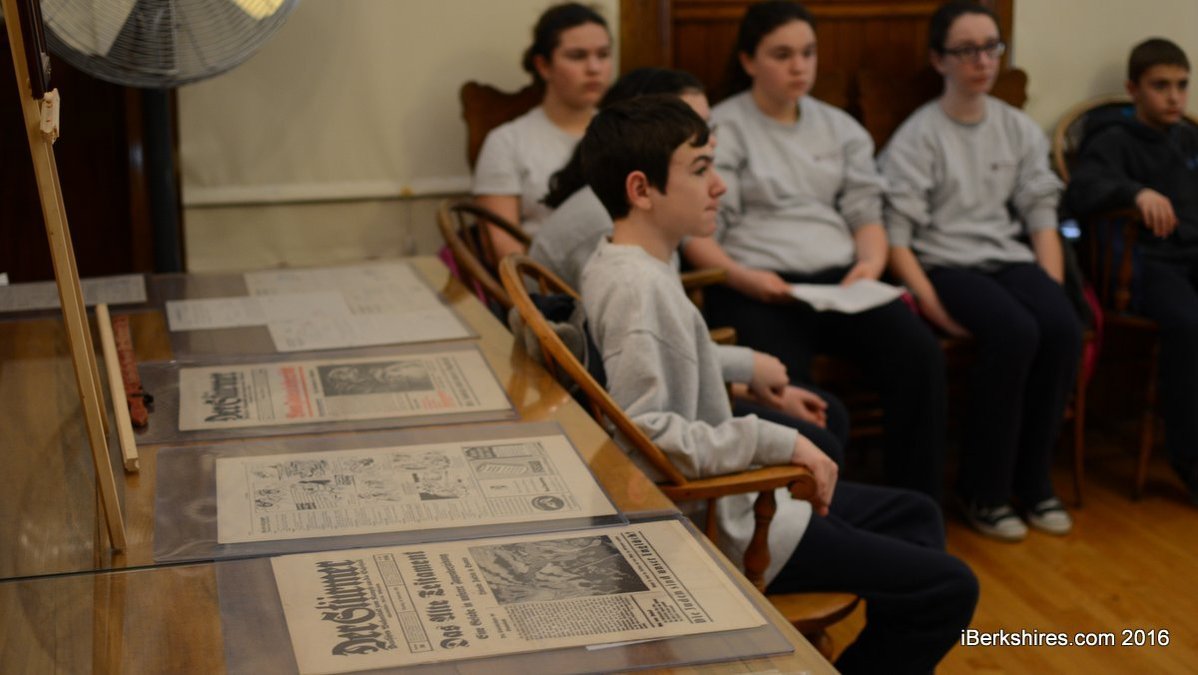
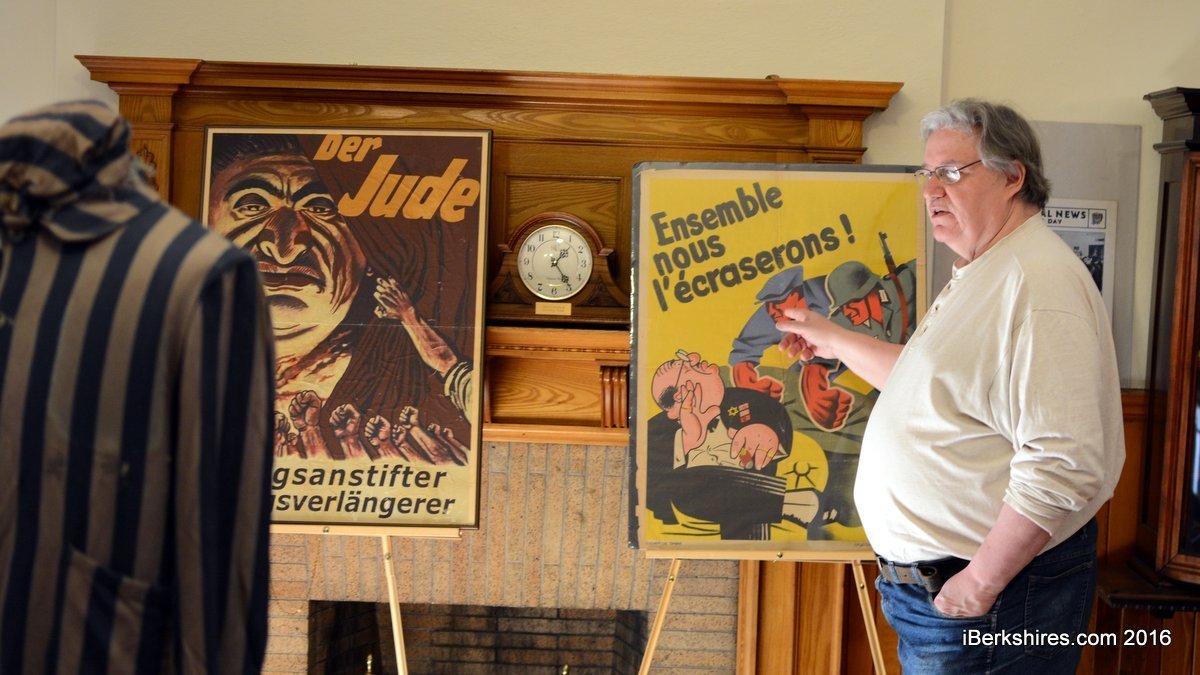
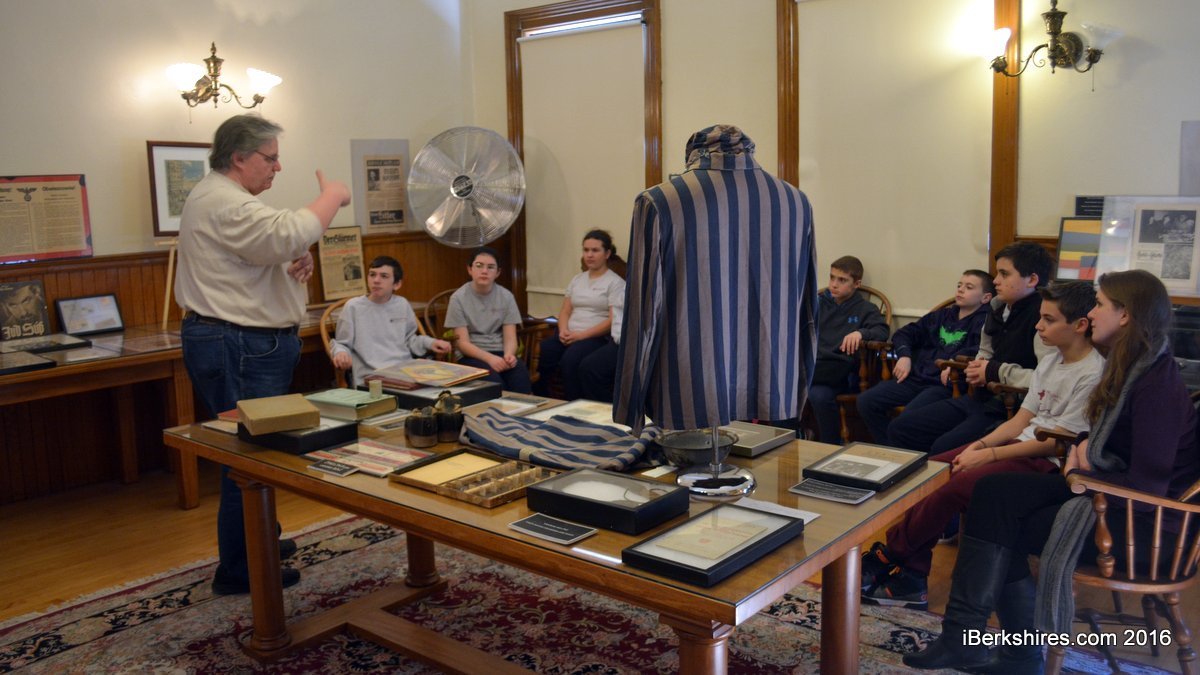
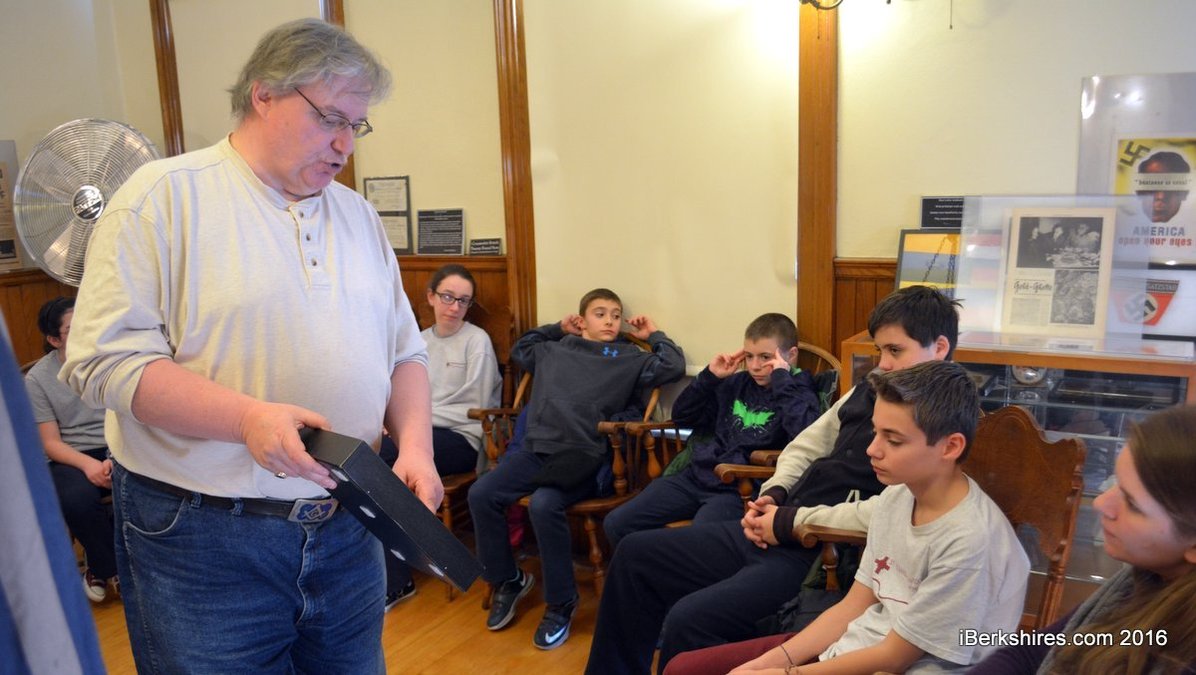
St. Stan's Students Look Deeper Into The Holocaust
ADAMS, Mass. — Seventh-graders from St. Stanislaus Kostka School got a look into a dark chapter of World War II — the Holocaust — through an exhibit of the New England Holocaust Institute.
As a supplement to this year's curriculum fair, the students met with museum owner Darrell K. English on Thursday at the Adams Free Library to ask him questions about their fair topics.
English said he has been collecting since he was young. His collection ranges from militaria to ephemera to posters to Holocaust memorabilia. The museum had been on Eagle Street in North Adams; a display is being kept at the library until a more permanent location can be found.
"This stuff made it through the war, it was picked up by an American GI, survived in his attic and basement until he died, and then I had to find it," English said. "To see this kind of collection you would have to go to the Holocaust Museum in Washington, D.C. That is expensive and most schools can't do that, but I am this little place in the corner of Adams."
English brought out reams posters, anti-Semitic newspapers, and books for a student studying Nazi propaganda. One book called "Rasputin: Tool of the Jew" came right out of Hitler's library.
He unspooled a film strip that came from a small canister with a swastika label on the top. He told the students that the film was shown in German schools and was designed to convince students that mentally challenged people were hurting Germany and using resources.
"This was a way of starting the conversation because kids would go home and tell their parents about this film strip they saw in school," English said. "This is how it all started."
English brought out a document that was presented to Hitler in 1933 from a community that granted him honorary citizenship in Germany. Hitler was not German, but Austrian.
"If you are an Austrian citizen how can you run in a German election?" English asked. "They made him an honorary citizen in many towns, villages, and cities…and now 70 years later there are communities trying to erase this from their ledger books."
English even had some items from Eva Braun, Hitler's wife. English passed out a napkin, forks, and calling card marked with her initials.
This lead to students asking about the swastika that English explained was used by many civilizations and was quite common. However, because of the Nazis' use of it, it now only brings heartache.
"You could not escape it. The swastika was on everything the Nazis produced," English said. "If they could tattoo it underneath your eyelids so when you closed your eyes at night you see it, they would have done it."
One student asked English about the "striped pajamas" he had in his collection.
English unfolded the concentration camp uniform and said the only Jews who had them were the ones that were not sent to death right away – although their life expectancy was 90 days at a concentration camp.
"You were divested of all of your clothing, they would shave off all of your hair, and they gave you this uniform and it was up to you to make it fit," he said.
He said the uniforms were marked so prisoners could be designated into groups such as Jews, Free Masons, Gypsies, homosexuals, or Polish.
Those who were known to try to escape had a bulls-eye painted on their back.
"If you were a known flight risk, they had a black round circle with a white one in the middle," he said. "It was a bulls-eye so that the guard could shoot you."
He said the uniforms were manufactured at a former Jewish company in Germany. The Nazis took over the company and the Jewish owners fled to America.
"The family's last name was Joel," he said. "We know a family member of the Joel family by the name of Billy. Billy Joel's grandfather started the company."
He pointed to a mug shot of Polish in a concentration camp wearing the striped uniform. He pointed out that the Nazis took a picture of their prisoner's left ear because it is the most unique part of the human body.
He added that Auschwitz was 20 square miles and about the size of North Adams. The only Jews who were given number tattoos went to Auschwitz.
Another student asked about the Nuremberg Laws, the anti-Semitic laws in Nazi Germany.
"They ramped up from 1935 until 1941," he said. "The last law in 1941 was no Jew could have gingerbread. They had rules like that that. As Dr. Martin Luther King Jr. said, everything Hitler did to the Jews he did legally."
English brought out his collection of Star of David badges that Jews had to wear. He said every Jew had to have one by 1941 and they could be purchased at synagogues. They were yellow because in the 1200s traveling Jewish merchants in Europe had to wear yellow belts to distinguish them as Jews.
English pointed out the smaller star badge used in Bulgaria.
"The king of Bulgaria basically told Hitler to go jump off of a rolling doughnut and that they weren't giving him any Jews," he said. "So the roughly 50,000 Bulgarian Jews survived."
The small patch complied with the law but could be placed under a collar and flipped over.
English aided one student who was studying Nazi medical experiments by bringing out some medical books. One was from Auschwitz that was most likely used by Josef Mengele, an SS officer and physician in the Auschwitz concentration camp who was performed deadly experiments on prisoners.
English said he would bring some of his artifacts down to the Curriculum Fair on Jan. 31 at 1 p.m. for the students to borrow for their projects. He said the artifacts help draw a better picture of history.
"I focus on things you wouldn't think about but that have a direct impact on everything. History is measured in the artifacts that are left behind," English said. "The artifact is what speaks because it was there and have to now reanimate it."
Clarification: Changed to clarify that "Polish" in a sentence referred to the victim, not the location of a concentration camp.
Tags: historical documents, historical exhibit, Holocaust, st stans,


